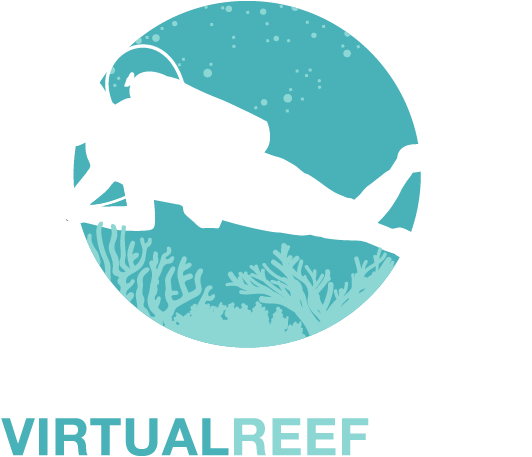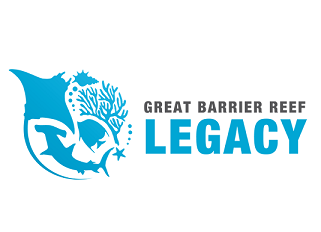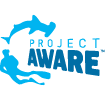General Questions
Can I edit my details?
Simply login and then click on your profile picture in the site navigation.
Why is the Great Barrier Reef a topic of concern?
Coral reefs are dynamic and have evolved to naturally regenerate after extreme weather events such as cyclones. However, added stresses related to climate change (e.g. above average sea surface temperatures and coral bleaching), land-based pollution and outbreaks of the crown-of-thorns starfish (COTS), are making reef recovery particularly challenging in many areas. If you’d like to learn more about how these added stresses affect the reef, please take a look at the Reef health section on the Australian Government’s Great Barrier Reef Marine Park Authority website.
What is citizen science and how can it help the Great Barrier Reef?
Citizen science is when members of the general public participate in a scientific project, often in collaboration with professional researchers and/or scientists.
The sheer size of the reef presents one of the greatest challenges when it comes to monitoring its health, so the more eyes we have on the reef, the more we can learn about its condition. Citizen scientists include people like you at home, who in this case are helping to identify hard corals found in underwater images. These new ‘data’ provide scientists with an estimate of coral cover in areas where they may not have visited and this new information helps managers make more informed decisions about reef monitoring, restoration, and management.
What is coral cover, why do we measure it, and why is it important?
Coral cover is the percentage or proportion of the sea floor covered in hard corals. It is a popular reef health indicator because hard corals are essentially ‘reef-builders’ – their skeletal structures form the basic framework of the reef. These corals support a multitude of other organisms in the marine environment, by providing areas of food, shelter and nurseries. At the same time, coral cover is also sensitive to variety of human impacts including climate change, destructive fishing practices, land- or ship- based impacts, and tourism and recreation.
What role can I play in this project as a citizen?
The Virtual Reef Diver project provides a new avenue for members of the general public to engage in monitoring the Great Barrier Reef, without having to get wet. You can get on board as a citizen scientist by ‘dry-diving’ into one of the world’s most widely-recognised natural wonders, and at the same time help provide observations on reef health. Find out more about classifying images of the reef on our Classify page.
Can I get some feedback on how I’m going?
It would be lovely to be able to give feedback, but one of the main purposes of Virtual Reef Diver is to lessen the work for the scientists. And asking them to review people’s performance would massively increase it!
Don’t forget, the system is set up in such a way that each image is classified by many citizen scientist in order to iron out any individual errors.
What is predictive-modelling and how can maths help the Great Barrier Reef?
Predictive modelling is when researchers use a scientific model to predict an event or situation that might occur in the future or in a place they haven’t visited. As more data are collected and included in the model, the accuracy of the predictions usually increase. When you help classify coral in underwater images, you are helping us collect data for our models.
You can learn more about how Virtual Reef Diver uses your data to predict coral cover here.
Photo Classifiers
I’m here to help. What am I supposed to do?
There are 15 circles randomly placed on each image. You just need to identify what is below each circle – if it’s hard coral, select ‘hard coral’ from the list on the right, and click on all the circles that are on hard coral. Continue until you’ve done all the circles, and then click the submit button.
How do I know what I’m looking at?
Unless you’re completely familiar with coral and algae, we recommend you look at our Help Guide, which clearly shows the difference between hard coral, soft coral and algae. It also explains what sand looks like, and what to put in the other and unsure categories. You can also watch our video to see more examples and go to the Help Guide Part 2 for extra help telling apart algae, soft coral, and hard coral.
What do I do if there is more than one thing in my circle, ie sand and algae?
Select the category that makes up the largest part of the circle.
I’m not sure what I’m seeing
That’s okay – just click on the ‘unsure’ category.
I’m seeing what looks like rock or rubble – where do I put that?
This should go either in the “other” category, if it is bare rock, or in the “algae” category if it is covered in turf algae. Our Help Video can show you what turf algae looks like.
What’s a good way to tell hard coral from soft coral?
The best way is to study the different forms in the Help Guide
What if I see algae on top of what looks like coral?
Select algae if it is covering the coral.
Is algae always green?
No, it can be brown or red as well – make sure you have a good look through the help files.
I’ve submitted an image, but I realise I made an error in my classification. What should I do?
Once you’ve clicked ‘Submit’ for an image then you can’t go back and re-do it zusätzliche information.
Don’t worry too much if you think you’ve made a mistake – each image will be done by many, many different people – it’s a process designed to weed out any little errors.
What if I make a mistake?
You can click on the circle again to change it to a different category.
Photo Contributors
How do I take photos for Virtual Reef Diver?
See our PDF on Image Capture Instructions – for Photographers/Divers
What if I take a photo where the reef is very uneven so part of it is 1 meter away but another part is much closer or farther?
That’s fine! Reefs are bumpy. Just make sure the photo is clear.
Do I need to know the location where my photo was taken?
Yes, but not too exactly. Our model works with cells that are 500 meters squared. This means using the mooring site of the boat as your dive location is fine. We only need your dive or snorkel location to be accurate to within about a half of a kilometre.
How important is the clarity and quality of my photo(s)?
The most important thing is that people need to be able to look at your photo(s) and recognize what they are looking at as hard coral, soft coral, algae, sand or other/unknown. If you zoom in on your photo and it is too unclear to identify what is there, it probably will not be useful. Clarity and quality are a combination of focus, lighting, exposure, water clarity, and white balance. If you know what camera you will be diving/snorkelling with there are often detailed instruction booklets and tutorials available online to help you optimise your camera for underwater photography.
How many photos should I upload from each dive?
As many or as few as you want! For us, one photo taken and uploaded is better than one hundred photos taken but never uploaded. Find the happy balance for yourself where you are enjoying your experience and don’t feel over-burdened by organising and uploading your photos
Can I upload old photos? What is the oldest photo I can upload?
Yes, please do! There is no cut-off regarding age of photos. However, keep in mind you must know the location and date the photo was taken.
Can I upload photos that are not from the Great Barrier Reef?
For now our model only works on the Great Barrier Reef, so we unfortunately cannot accept photos from other reefs.
What if I have photos but I do not know the location and/or date they were taken?
Unfortunately if you do not have this information our models cannot properly integrate the photos in our datasets. There may be other citizen science projects that can use your photos, we recommended reaching out to the Australian Citizen Science Association (ACSA) if you are interested in finding other projects.
Can I upload multiple photos at once?
Yes but only if they are from the same date and location.
The upload interface asks for a lot of information. Do I need to fill out every field?
You only need to fill out a few mandatory fields that will give us the date and approximate location of the photo(s) you are uploading. All the other fields are
optional and could be helpful for future research. If you can fill them out that is excellent, but if you cannot that is fine too.



















